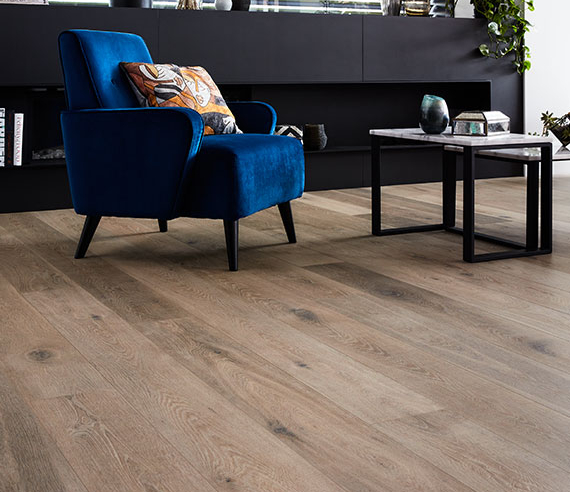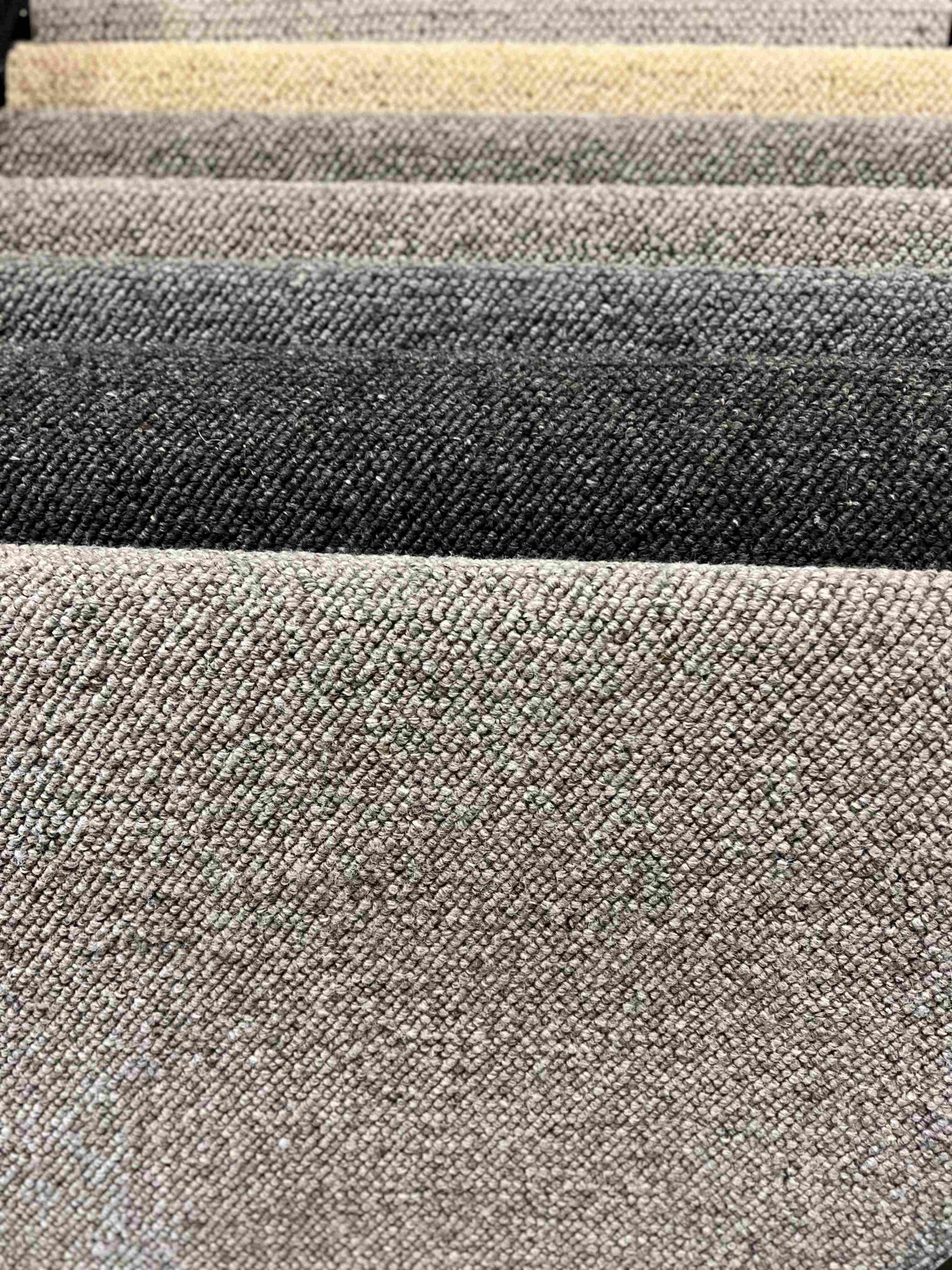Vinyl sheet flooring is a durable and cost-effective option for any home or commercial space. If you’re considering vinyl sheet flooring, this definitive guide will provide everything you need to know about the different types, how to choose the best option for your needs, installation tips, and maintenance recommendations. With our expert insights and attention to detail, you’ll be able to make an informed decision that suits both your style preferences and budget.
What is Vinyl Sheet Flooring?
Vinyl sheet flooring is a type of resilient flooring that is made from vinyl. It comes in large, flexible sheets that can be cut to fit any size room. This type of flooring is affordable and easy to install, making it a popular choice for builders and homeowners alike. Vinyl sheet flooring has been around for many years and was first introduced in Australia in the 1960s. Today, there are many brands of vinyl sheet flooring available on the market, each with their own unique features and benefits.
One of the advantages of using vinyl sheet flooring over other types of floor coverings like carpet or tile is its durability. Vinyl sheet can withstand heavy foot traffic without showing signs of wear and tear. It also resists water damage, making it ideal for use in bathrooms or kitchens where spills are likely to occur. Additionally, vinyl sheet flooring comes in a wide variety of colors and patterns which can mimic other materials such as wood or stone at a fraction of the cost
Composition
Vinyl sheet flooring is a popular and affordable option for builders and homeowners alike, offering a durable and low-maintenance alternative to carpet. Its composition includes layers of vinyl material, with a backing layer providing stability and moisture resistance. The printed design layer offers texture and color options to suit any brand or design preference.
Here are some key features of vinyl sheet flooring composition:
Layers of vinyl material
Backing layer for stability and moisture resistance
Printed design layer with texture and color options
Vinyl sheet flooring’s unique construction makes it an excellent choice for areas prone to spills or high traffic. It can also mimic the look of other materials like hardwood or tile without the added cost. With its versatility in style, durability, affordability, it’s no wonder why more Australians opt for this type of flooring over others!
Advantages
Vinyl sheet flooring is an excellent option for homeowners who want durable and long-lasting flooring that is also water-resistant and easy to clean. This type of flooring is affordable compared to other options like carpet, making it a popular choice for builders in Australia.
Advantages include:
Durability and longevity
Water resistance and ease of cleaning
Affordability compared to other flooring options
Types of Vinyl Sheet Flooring
Vinyl sheet flooring comes in two main types: printed and inlaid. Printed vinyl sheet flooring features a thin wear layer with a printed design layer beneath it. This type of flooring is more affordable but may not be as durable as its counterpart.
In contrast, inlaid vinyl sheet flooring has color and design throughout the material’s thickness, making it highly resistant to scratches and scuffs. As a result, this type of vinyl is ideal for high-traffic areas or households with pets that may scratch the floors. Regardless of your choice, both types offer affordability, easy installation, and low maintenance requirements – making them great options for any home renovation project!
Printed Vinyl Sheet Flooring
Printed vinyl sheet flooring is made by printing a pattern or design onto the surface of the vinyl sheets. The process involves layering different materials, including fiberglass backing and wear layers, on top of each other to create a durable and long-lasting product.
Advantages:
Wide variety of designs available
Easy to install
Durable and easy to maintain
Water resistant
Disadvantages:
Can fade over time with exposure to sunlight
May show scratches or dents more easily than other types of flooring
Inlaid Vinyl Sheet Flooring
How inlaid vinyl sheet flooring is made:
Inlaid vinyl sheet flooring is crafted by embedding colored vinyl chips into a backing layer during manufacturing. The resulting design goes all the way through the thickness of the material, providing excellent durability and longevity.
Advantages of inlaid vinyl sheet flooring:
High resilience and scratch resistance
Long lasting color retention
Easy to clean and maintain
Versatile design options
Disadvantages of inlaid vinyl sheet flooring:
Higher initial cost compared to other types of resilient flooring
Installation may require professional expertise for optimal results
Choosing Vinyl Sheet Flooring
When choosing vinyl sheet flooring, it’s important to consider the room requirements. Some types of vinyl sheets may not be suitable for high-moisture areas like the bathroom or kitchen. Additionally, some may not have adequate insulation for colder rooms.
Another factor to keep in mind is the traffic level of the area where you’ll be installing your vinyl sheet flooring. High-traffic areas will require a more durable and thicker material than low-traffic spaces. By considering these factors when choosing your vinyl sheet flooring, you can ensure that it meets your specific needs and lasts for years to come.
Room Requirements
Moisture and water resistance is a crucial requirement for vinyl sheet flooring. It’s essential to choose a product that can withstand exposure to moisture without getting damaged or warped. Additionally, compatibility with subfloor type should be considered before installation.
Suitability for high-moisture areas like kitchens and bathrooms is also important when choosing vinyl sheet flooring. Here are some factors to consider:
Moisture resistance
Compatibility with the subfloor type
Suitability for high moisture areas like kitchens and bathrooms
By keeping these requirements in mind, you can select the ideal vinyl sheet flooring that will last long while looking great in any room!
Traffic Level
Durability is one of the key considerations when choosing a vinyl sheet flooring, especially for areas with heavy foot traffic like entryways and hallways. Look for options that are designed to withstand wear and tear without compromising on appearance.
Comfort level is another factor to keep in mind, particularly if you’re looking for flooring solutions for workspaces or playrooms where people will be standing or walking around for long periods of time. Opting for cushioned vinyl can help alleviate discomfort and fatigue.
In addition to durability and comfort, resistance to scratching, scuffing, and damage from furniture movement should also be taken into account. Some important pointers include:
Select thicker vinyl sheets as they offer more protection against scratches.
Use floor protectors under furniture legs.
Avoid dragging heavy objects across the floor.
By considering these factors when selecting vinyl sheet flooring, you’ll end up with a durable option that provides both comfort and longevity while still being resistant to potential damages caused by everyday use.
Budget
Determining the cost per square footage including installation costs is an important factor to consider when budgeting for vinyl sheet flooring. However, it’s possible to find options that offer a good balance between budget-friendliness and durability, without sacrificing quality. On the other hand, premium options provide extra features such as soundproofing or extra thickness but come at a higher price point.
Here are some value and premium options to consider:
Value:
Armstrong Cushion Step: offers comfort underfoot with its cushioned backing.
Forbo: has a protective layer that resists stains and spills.
Premium:
Tarkett Fiber Floor: provides sound insulation properties for reducing noise transmission between floors.
Polyflor: includes fiberglass reinforcement for added strength and durability.
Remember that while cost is an essential aspect of your decision-making process, you should also take into account other factors like room requirements and traffic level before making your final choice on vinyl sheet flooring.
Installation of Vinyl Sheet Flooring
Before installing vinyl sheet flooring, it is essential to prepare the surface thoroughly. Begin by ensuring that the subfloor is clean, flat and dry. Any debris or bumps on the floor should be removed using a putty knife and sander. After cleaning the subfloor, measure its dimensions accurately to determine how much vinyl sheet flooring you need.
To install vinyl sheet flooring efficiently, you’ll require some essential tools such as a notched trowel, utility knife and measuring tape. Cut your vinyl sheet according to your measurements with a sharp utility knife after laying it out over your workspace. Roll up half of the cut vinyl lengthwise before applying adhesive onto one side of an uncovered floor section with a notched trowel.
Preparation
Measuring and calculating the floor area is a crucial step in preparing for vinyl sheet flooring installation. This will ensure that you have the right amount of materials to complete the job without any wastage or shortage. Once you have measured, clear and clean the installation surface thoroughly, making sure there are no bumps, cracks or debris that could affect your final result. Checking for moisture levels is also essential as excessive moisture can cause damage to your new flooring.
Here’s a quick checklist for preparation:
Measure and calculate floor area
Clear and clean installation surface
Check for moisture levels
Tools Required
To install vinyl sheet flooring, you will need a few essential tools. These include:
Utility knife or vinyl cutter: For cutting the vinyl sheets to fit your room’s dimensions.
Tape measure: To accurately measure the size of your room and the amount of material needed.
Floor roller: Used to press down on the adhesive and remove any air bubbles.
Having these tools on hand will ensure that your installation process goes smoothly and efficiently.
Installation Process
Cutting the vinyl sheet to fit the space being covered is an essential part of the installation process. Measure twice, cut once! Once you have your measurements, use a sharp utility knife and straight edge to make precise cuts.
Laying out adhesive on one half of the room at a time will help prevent it from drying out too quickly. This ensures that there’s still enough moisture in the adhesive for when you lay down the vinyl sheet. Roll over each section with a floor roller to press it firmly onto the adhesive, ensuring no bubbles or wrinkles are formed.
Here are some additional tips for installing vinyl sheet flooring:
Start at one end of the room and work your way toward the other.
Make sure to leave enough excess material around corners so that you can trim it later.
Use seam sealer along all edges where two pieces meet, including against walls and cabinets.
Wait 24 hours before walking on or cleaning your new floor.
Maintenance of Vinyl Sheet Flooring
Regular cleaning and maintenance are crucial to extend the lifespan of vinyl sheet flooring. Sweep or vacuum the floor daily to get rid of dust, dirt, and debris. Use a damp mop with mild detergent for deeper cleaning on a weekly basis. Avoid using abrasive cleaners that can damage the surface of vinyl sheet flooring.
In addition to regular cleaning, taking preventive measures can also prolong the life of your vinyl sheet flooring. Place doormats at entryways to reduce tracked-in dirt and moisture. Use furniture pads under heavy pieces such as sofas or tables to prevent scratches and dents. Lastly, avoid exposing your vinyl floors to direct sunlight or extreme temperatures as it may cause fading or warping over time.
Cleaning
Choosing the right cleaning agents for vinyl sheet flooring is crucial in maintaining its shine and overall appearance. It’s important to avoid using abrasive or acidic cleaners that can damage the surface of the flooring. Stick to mild detergents and water-based solutions instead.
Frequency of cleaning also plays a significant role in maintaining your vinyl sheet flooring’s shine. Regular sweeping, vacuuming, and damp mopping should be done at least once a week. For high-traffic areas, daily maintenance may be necessary.
When it comes to spills and stains on your vinyl sheet flooring, quick action is key. Blotting up any spills immediately with a clean cloth can prevent staining from setting in. For more
stubborn stains, use a mixture of warm water and detergent along with some elbow grease to effectively remove them.
Cleaning tips for vinyl sheet flooring:
Use only mild detergents or waterbased cleaners
Sweep or vacuum regularly
Damp mop at least once every week
Attend quickly to spills by blotting them up as soon as possible
Preventive Measures
Placing doormats at all entryways is one of the easiest ways to prevent dirt accumulation on your vinyl sheet flooring. Using furniture pads is also essential in protecting your floors from scratches caused by moving furniture around. Lastly, avoid exposing your vinyl sheet flooring to direct sunlight or extreme temperatures as they can cause damage over time.
Place doormats at all entryways
Use furniture pads when moving furniture
Avoid exposure to direct sunlight or extreme temperatures
Conclusion
When it comes to flooring options, vinyl sheet flooring is a versatile and cost-effective choice that can provide both durability and style. With its easy installation process and low maintenance requirements, it’s no wonder why many homeowners are opting for this option in their homes. However, before making a decision on which type of vinyl sheet flooring to choose from, it’s important to take into consideration factors such as room usage, traffic levels, and budget constraints.
In conclusion, when looking for an affordable yet durable flooring solution for your home or business space that also offers design versatility with minimal upkeep requirements; vinyl sheet flooring could be the perfect fit. By keeping in mind the different types available on the market based on thicknesses or patterns along with other factors like usage areas & budgets – you’ll find just what you need!







